英汉词语表达的分析性和综合性差异与互译实践.ppt.Convertor
- 格式:doc
- 大小:113.00 KB
- 文档页数:11
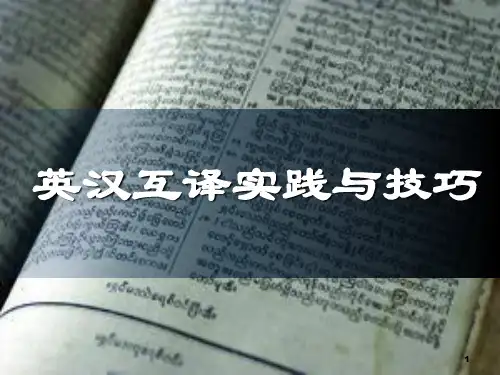


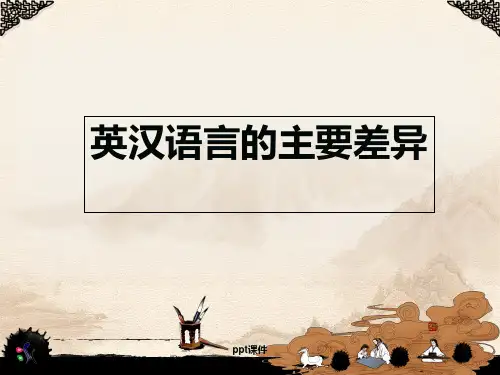
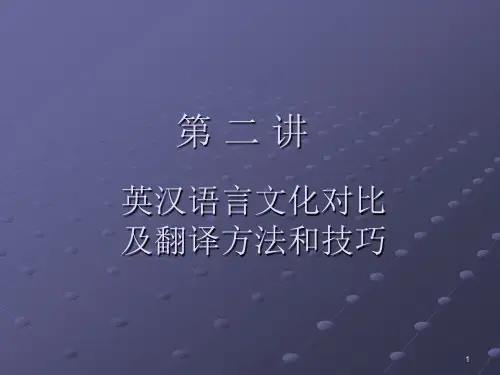
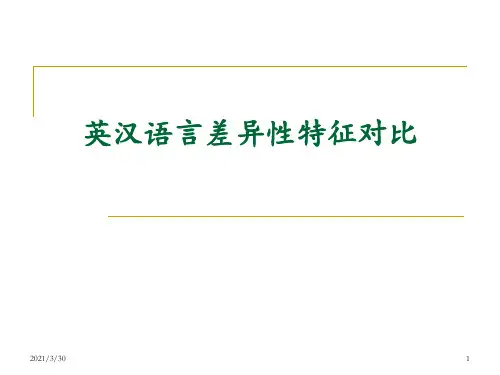

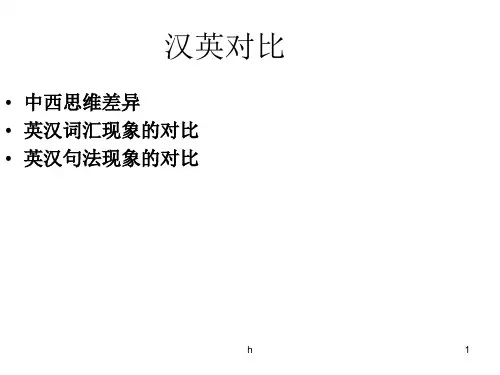
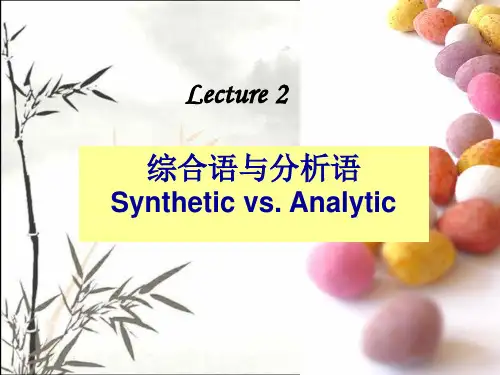
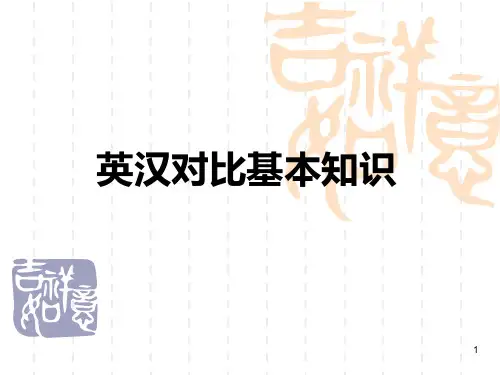
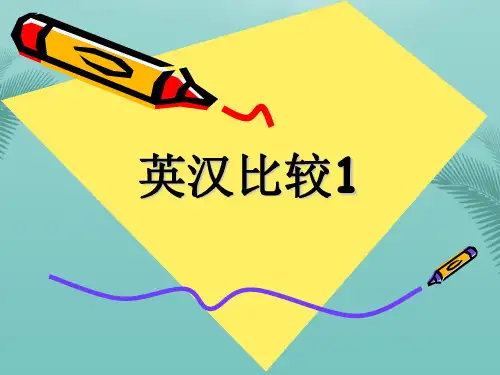
英汉词语表达的: 分析性和综合性analytic expression and synthetic expressionOutlineAnalytic & synthetic expression related to degree of lexicalizationFactors for the occurrence of lexicalizationDifferent degree of lexicalization in word-formationDifferent degree of lexicalization in parts of speechImplications for C-E and E-C translationAnalytic & synthetic expressionSynthetic expression (i.e., one word) is often sufficient to combine what analytic expression can only achieve by using multiple words.Synthetic expression characterized by high degree of lexicalization while analytic by lower degree of lexicalization.Factors for lexicalization1. Grammar2. Condensing3. Frequency4. CultureGrammarChinese –the tendency of analytic: limited affixes; disyllables; single morpheme words in decline; various predicate structuresEnglish – the tendency of synthetic:free morpheme (-ful /full –less/leas -ship/shape)mouthful/ spoonful/ eventful/ hopeful…fruitless/ sleepless/ useless/ homeless…friendshi p/ partnership/ membership/ citizenship…Condensing物色——绢帛之类贵重丝品——用物色来寻求、交易——寻求(王灿龙2005)帝思其贤,乃物色求之。
英汉词语表达的: 分析性和综合性analytic expression and synthetic expressionOutlineAnalytic & synthetic expression related to degree of lexicalizationFactors for the occurrence of lexicalizationDifferent degree of lexicalization in word-formationDifferent degree of lexicalization in parts of speechImplications for C-E and E-C translationAnalytic & synthetic expressionSynthetic expression (i.e., one word) is often sufficient to combine what analytic expression can only achieve by using multiple words.Synthetic expression characterized by high degree of lexicalization while analytic by lower degree of lexicalization.Factors for lexicalization1. Grammar2. Condensing3. Frequency4. CultureGrammarChinese –the tendency of analytic: limited affixes; disyllables; single morpheme words in decline; various predicate structuresEnglish – the tendency of synthetic:free morpheme (-ful /full –less/leas -ship/shape)mouthful/ spoonful/ eventful/ hopeful…fruitless/ sleepless/ useless/ homeless…friendshi p/ partnership/ membership/ citizenship…Condensing物色——绢帛之类贵重丝品——用物色来寻求、交易——寻求(王灿龙2005)帝思其贤,乃物色求之。
(晋《高士传》)从者已告,华令物色之。
(明《情史》)日以物色人才为职志。
(清《秋瑾传》)Condensing: brunch breakfast + lunchDink: a couple who have dual income but no kidsGASP: Greater Alliance to Stop PollutionFrequency:―爱国‖patrio tism 爱花love 、爱校love my school、爱民love people 看、听、说、闻、尝See/hear/speak/smell/tasteBlind/deaf/dumb/…? /…?Culture: Chinese – cooking semantic field煮、炖、煨、焖、熬、炝、汆、涮、烀、焯、煲boil /coddle; simmer/poach; stew炒、烩、熘、烹、煸sautébake/ toast/ roast/ broil/ grill/ barbecue/ searCulturebarge (驳船)/ brig (双桅横帆船)/ ketch(双桅纵帆船)/ yawl(双桅帆船)/ barque(三桅帆船)/ punt(方头平底船)/ freighter(货船)/ schooner(纵帆船)/ ferryboat(摆渡船)/ storeship(军需船)/ catamaran (双体船)Different degree of lexicalization in word-formationAffixation –high degree of lexicalizationAffixation 英汉加缀法现象(examples-what)加缀法差异总结(conclusion-what)加缀法差异启示(implication-why & how)Chinese Affixation子儿子老子妻子嫂子小姨子小舅子小叔子小姑子厨子鬼赌鬼冒失鬼胆小鬼汉好汉硬汉懒汉门外汉家行家姑娘家作曲家画家玩家头丫头姘头对头刺头魔头手帮手选手凶手生手坦克手董秀芳(2005 汉语学习)汉语词缀的性质与汉语词法特点(与其他一些语言中的词缀相比,一方面使用不普遍,另一方面在特征上也不典型.词缀在汉语中是一个不稳定的范畴,词缀与词根语素的差别不显著.汉语词缀的特点决定了派生构词不是汉语主要的词法模式,汉语中主要的词法模式是复合法,这是由汉语语素的总体特点所决定的. )汉语词缀数量不多,最多不超过100个,并且已经包括了新兴词缀如非-、准-等,和类词缀如半-、好-等。
(藤永超1999)Affixation他行进快速,我们感到惊讶。
他快速行进,我们感到惊讶。
Move/moving/ movementsFast/ rapid/ rapidityAstonish/ astonishing/ astonishinglyHe moved astonishingly fast.He moved with astonishing rapidity.His movements were astonishingly rapid.His rapid movements astonished us.His movements astonished us by their rapidity.The rapidity of his movements was astonishing.The rapidity with which he moved astonished us.He astonished us by moving rapidly.He astonished us by his rapid movements.He astonished us by the rapidity of his movements. (O. Jespersen )加缀法是英语构词法的核心。
英语词缀丰富,保持一个英语词根的核心地位,向四周辐射即加上不同的前缀或后缀,就能呈现一个核心扩散样态。
汉语词缀数量有限,加缀不固定(阿哥、阿姐、哥哥、姐姐、哥、姐、我哥哥、我姐姐),构词呈现一个平面扩展样态。
新闻英语有不少复杂的表达都是通过派生词词缀化的,强调简洁departmentalize – to organize into different departmentscontainerization – the process of putting things into containersconsumerism / mindless / deregulation/ anchormanese / plutography/ swallower/ stuffer / ecofreak / antihero/ educationwise / luncheonette / Eurocrat/ …Implication——high degree of lexicalization丹麦语法学家Jespersen (1949) 很早就注意到了派生词化现象(lexicalization)。
以韩礼德Halliday为代表的系统功能学派从语法隐喻角度提出派生名词词化程度很高。
Implication——英语词化手段=汉语变通手段To insure the widest acceptability or greatest potential profitability,the plot lines follow the most commonly accepted notions of morality and justice.为了确保电视能得到最广大的群众接受,或获得最大的潜在利润,情节应追随大众对道德和正义最常见的看法。
Implication——英语词化手段=汉语变通手段The future, then, to which the epoch of modern economic growth is leading, is one of never ending economic growth, a world in which ever growing abundance is matched by ever rising aspiration.现代经济发展时代所要引向的未来是一个经济发展永不停止的时代,是一个物质不断丰富,人的愿望永不满足的世界。
Implication——英语词化手段=汉语变通手段表示使役动作意义derail dispirit privatize soften …表示动宾动补意义unlock unload unplug disown disfigure overbalance outgrown When I got to my hotel room I didn‘t unpack right away.Composition英汉复合词现象(examples-what)复合词差异总结(conclusion-what)复合词差异启示(implication-how)Chinese Composition-1.汉语并列关系同义联合海洋、追逐、吹嘘、堵塞、贸易、贯穿反义联合始终、甘苦、方圆、供求、异同、呼吸类义联合尺寸、江山、骨肉、眉目、针线、穿戴偏义联合忘记、动静、睡觉、国家、女儿、好歹Chinese Composition-2.汉语结构关系主谓式: 地震、头痛、国有、性急、眼热、二人转动宾式: 行政、动员、接风、关心、得意、满意偏正式: 夕阳、火红、白糖、钢笔、冰冷、雪白正补式: 治安、割断、说服、击破、阐明、澄清纸张、车辆、人口、稿件、花束、枪支Chinese Composition-3.汉语词族形成―客文化‖ 博客播客威客闪客测客黑客红客奇客换客印客―秀‖ (音译词语素化)做秀、脱口秀、人体秀、高考秀、处女秀、处子秀、商业秀、模仿秀、泪眼秀…树/…车/…笑/…说…English Composition-1.英语并列关系英语并列关系只有一种情况,―形容词+形容词合成形容词‖(Quirk 1972)Deaf-muteBitter-sweetSocio-economicPsycholinguisticSwedish-AmericanPhonetic-syntacticEnglish Composition-2.英语结构关系主谓式earthquake/headache/ daybreak/ heartbeat动宾式knitwear/ pushbutton/ pin-up girl/drawbridge正补式feedback/ breakthrough/ see through/setback没有偏正式的综合说法汉语复合词的构词顺序受并列关系(逻辑关系-时间、因果、心理轻重)和句法结构关系(主谓、动宾、偏正、正补)制约。